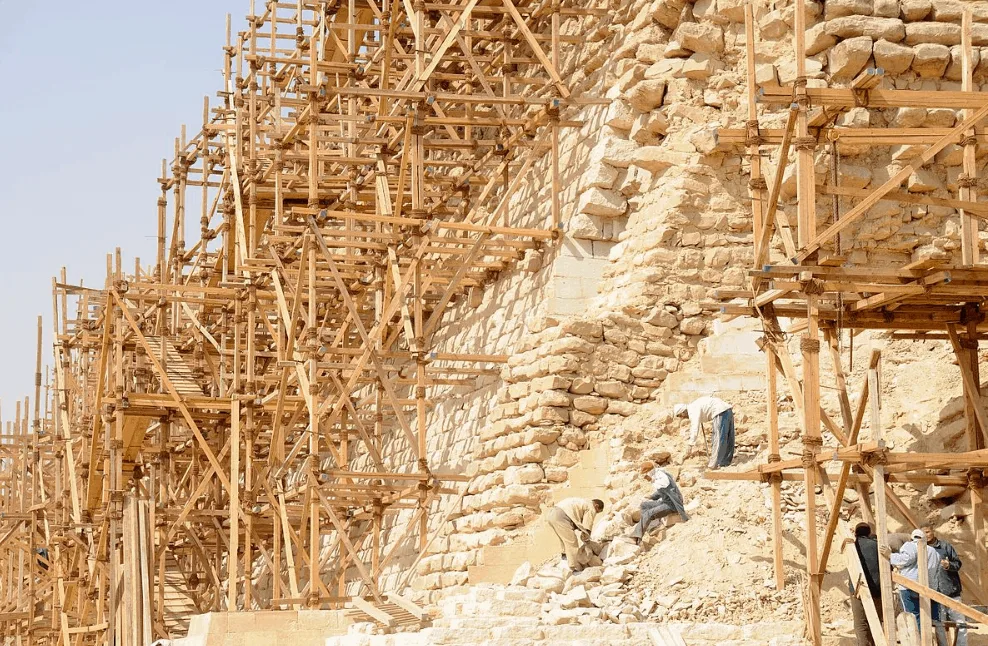The Ancient Egyptians built numerous large pyramids, and this is one of the oldest of all.
Here are some interesting facts about the Pyramid of Djoser, one of the most fascinating buildings in Egypt.
1. It used to be the tallest building in the world
The Pyramid of Djoser is a step pyramid that originally had a height of 62.5 meters (205 feet) and a base of 121 meters (397 feet) by 109 meters (358 feet).
Upon its completion, it was the tallest building in the world for 40 years until it was surpassed by another pyramid at Meidum.

2. Was it the oldest large-scale stone structure ever built?
The Pyramid of Djoser was built in the 27th century B.C. (2670-2650) during the Third Dynasty of Ancient Egypt. This was actually the First Dynasty of the Old Kingdom, a period between 2686 and 2181 B.C.
That was about 100 years before the Great Pyramid of Giza was built. the famous Temple of Hatshepsut was only built 1,200 later!
Many historians believe that Djoser’s Pyramid is the oldest large-scale cut stone construction project in history.

3. It was built for the pharaoh Djoser who actually had another name
Djoser is believed to have been the first pharaoh of the ancient Egyptian Old Kingdom. When he was the pharaoh, he wasn’t known as Djoser though but by his Horus name Netjeriykhet.
It wasn’t until the New Kingdom, between the 16th and 11th centuries B.C., that Netjeriykhet was being referred to as Djoser.

4. Where is the pyramid of Djoser located?

The Pyramid of Djoser is located in the Saqqara Necropolis, just northwest of the Ancient city of Memphis. This ancient city is the ancient capital of Inebu-hedj, one of the regions, referred to as a “Nome,” of Lower Egypt.
The ruins of this ancient city can be found near the town of Mit Rahina, about 20 kilometers to the southeast of Giza which in turn is located just outside of Egypt’s capital Cairo.
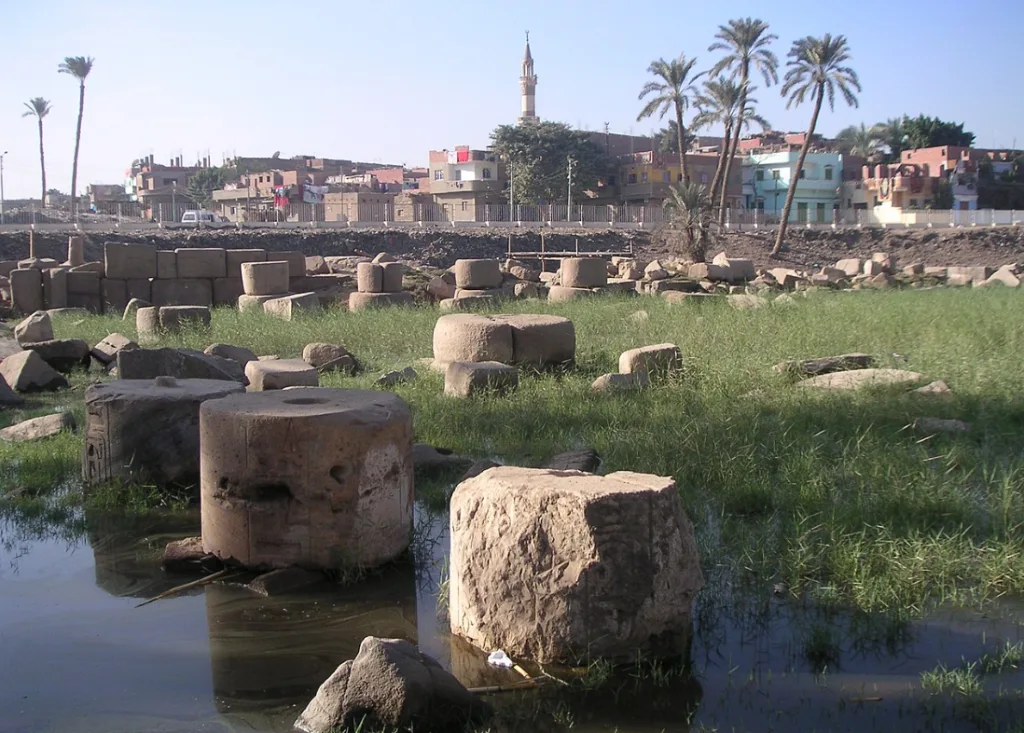
5. The pyramid is part of a much larger complex
The pyramid of Djoser is the centerpiece of a vast mortuary complex that contains multiple structures and decorations.
The entire complex is called the “Saqqara Necropolis” which used to serve as the main burial ground for the ancient city of Memphis.
The necropolis covers an area of 7 by 1.5 kilometers (4.35 by 0.93 miles) and at least 16 other pharaohs have built pyramids inside this complex as well. It used to serve as an important necropolis for over 3,000 years, well into Roman times.

6. Djoser had a great architect
While the Pyramid was built for Djoser, the mastermind behind its construction was Djoser’s chancellor, high priest, and main architect, Imhotep.
The pyramid itself, which was the first massive pyramid ever built, would serve as the main inspiration of all the other pyramids that were ever built in the future.
One of the most remarkable facts about the Pyramid of Djoser is that its architect, Imhotep, was one of the few non-royal figures in Ancient Egypt to become deified after his death.
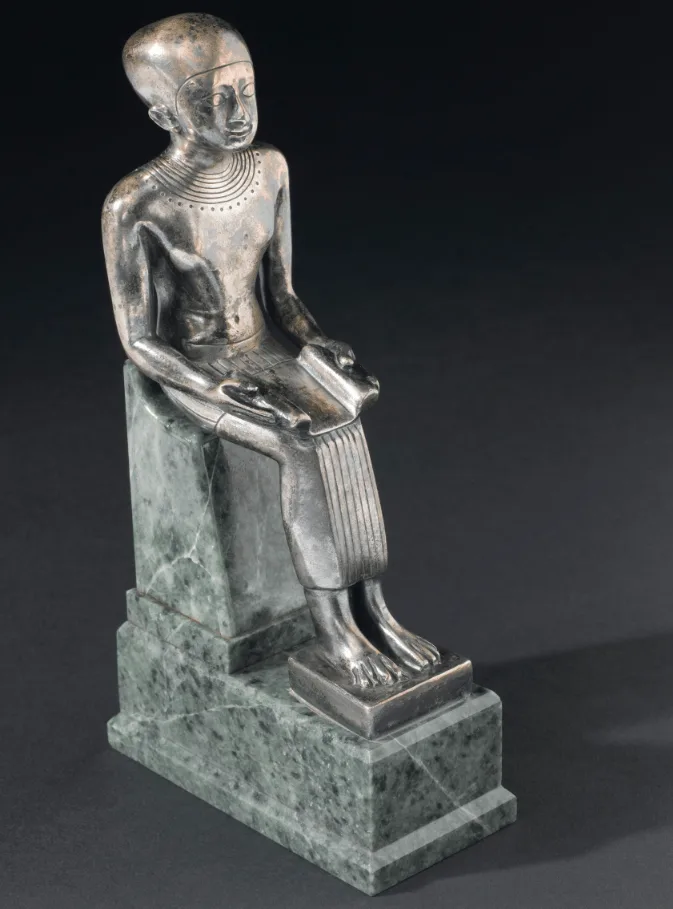
7. This is where Djoser got his inspiration from
The Pyramid of Djoser wasn’t the first structure to be built at the Saqqara Necropolis. Many other buildings such as mastabas and temples were already erected at the complex and the first burials date back to the First Dynasty (3,100-2,900 B.C.).
This makes it obvious that Imhotep would have found inspiration in these earlier structures and the most prominent example is the mastaba 3038 located at Saqqara, which was built using mudbricks and had a rectangular design and was built around 2,700 B.C.
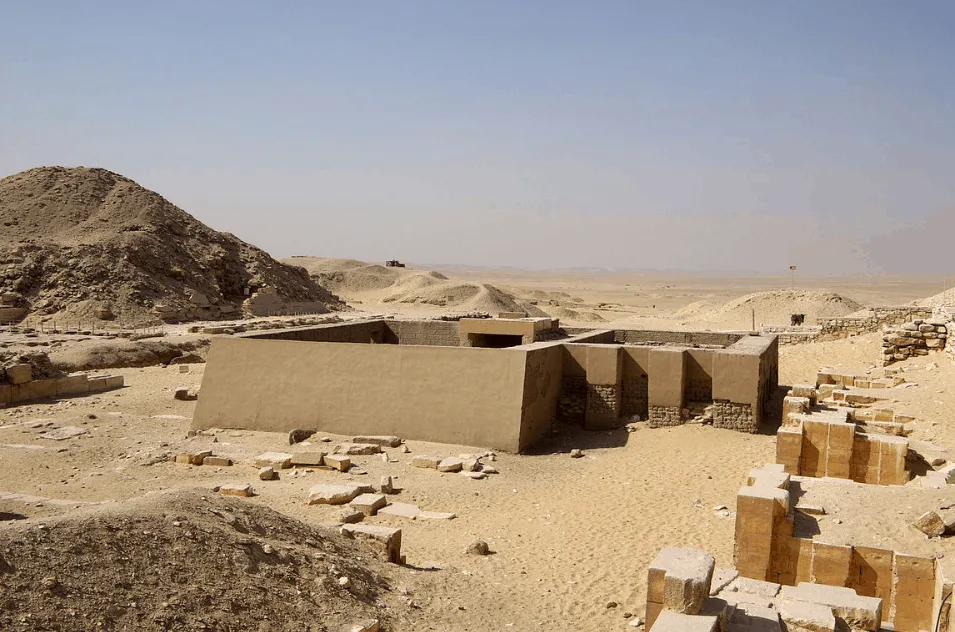
8. The pyramid was built in multiple stages
Unlike most of the other pyramids that were built, the Pyramid of Djoser is a step pyramid and consists of 6 steps. This means that it started out being built with the shape of a mastaba, but 6 steps were added on top of it.
The initial mastaba, however, was a square, which makes historians believe that the structure was never meant to be a mastaba and that the steps were part of the general plan.
It’s generally accepted though that a major shift in construction took place after the initial mastaba was built. After this, it appears a plan to build a 4-step pyramid was created which was changed yet again to its final form with 6 steps.
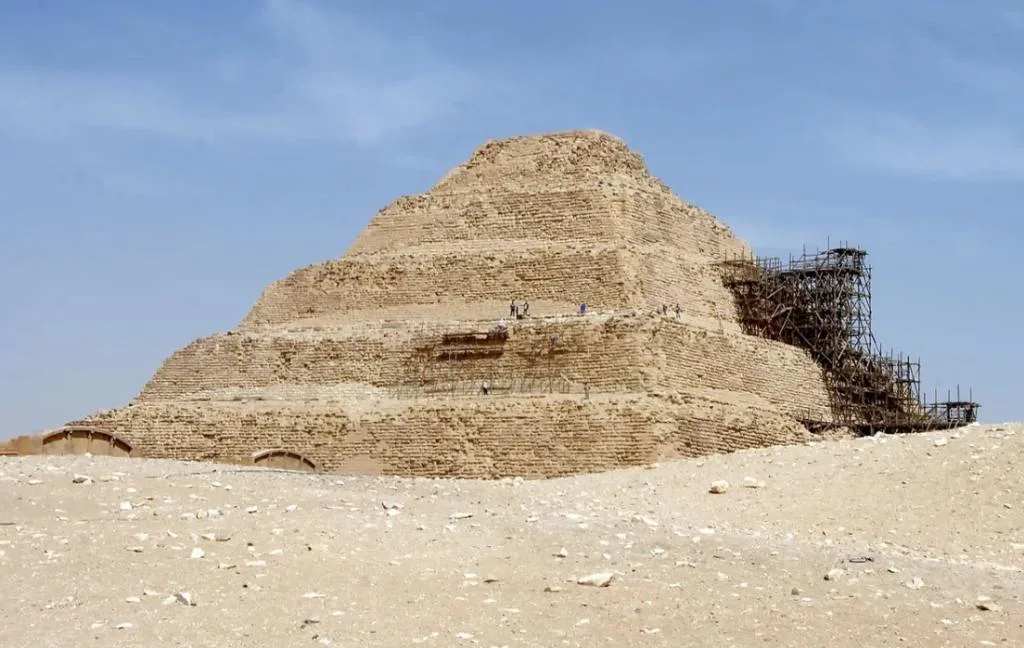
9. How did the Ancient Egyptians move the large stones?
It remains one of the greatest mysteries in history: How did the Ancient Egyptians manage to build these enormous structures?
It’s astonishing because if we would try to recreate for example the Great Pyramid of Giza with our modern technologies, we wouldn’t actually be capable to do it!
As for now, we can only guess, and it’s widely accepted that they must have used ramps in combination with rollers to move the massive stones into place, something which appears to be much easier than initially thought by using a trick with wet sand.

10. The pyramid contains a huge labyrinth of tunnels
What we see on the outside is a step pyramid. What’s actually inside is a labyrinth of tunnels with a total length of 6 kilometers (3.72 miles)!
This intricate labyrinth of tunnels all leads to a central shaft that leads up to a 7-meter square that is located 27 meters (88 feet) below the ground.
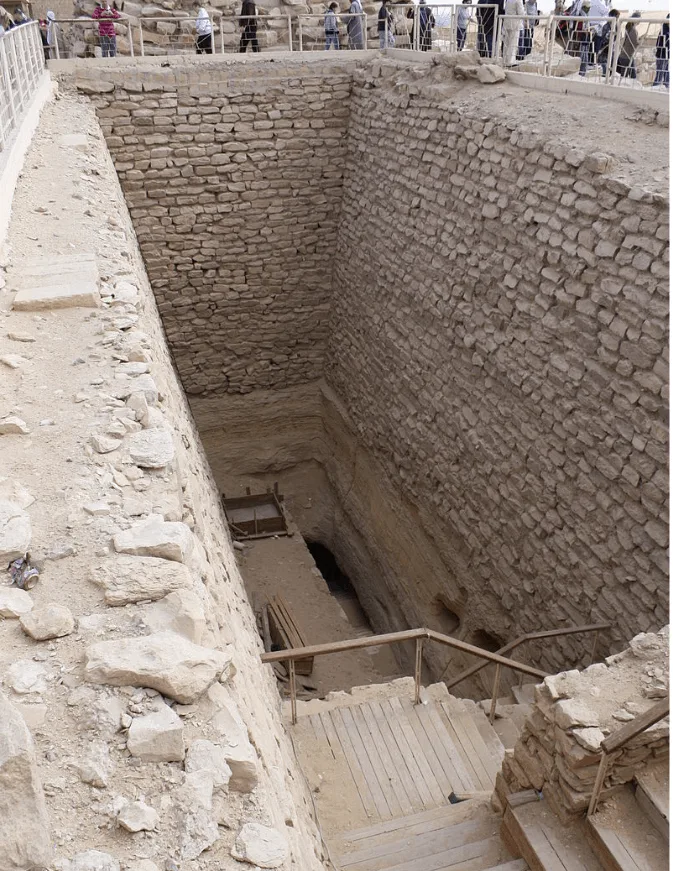
11. Djoser had everything he needed for the afterlife
The whole idea of building a pyramid is to allow the pharaoh to have an easy transition to the afterlife. The afterlife is just like life on earth and the pharaoh must eat and drink.
A total of 40,000 stone artifacts were found to suit him in his afterlife! Many of these pre-dated him as well.
It’s also assumed that one of the chambers was supposed to be the pharaoh’s harem (to have some fun in the afterlife), but this is contested by some historians.

12. Djoser’s body was robbed from the burial chamber
One of the most remarkable facts about the Pyramid of Djoser is that his body was never recovered from his tomb.
Since it was the first massive pyramid and because the site was used as a burial for thousands of years to come, it was severely robbed, which includes apparently the body of the pharaoh who was buried there.
So no, there isn’t a Djoser mummy.
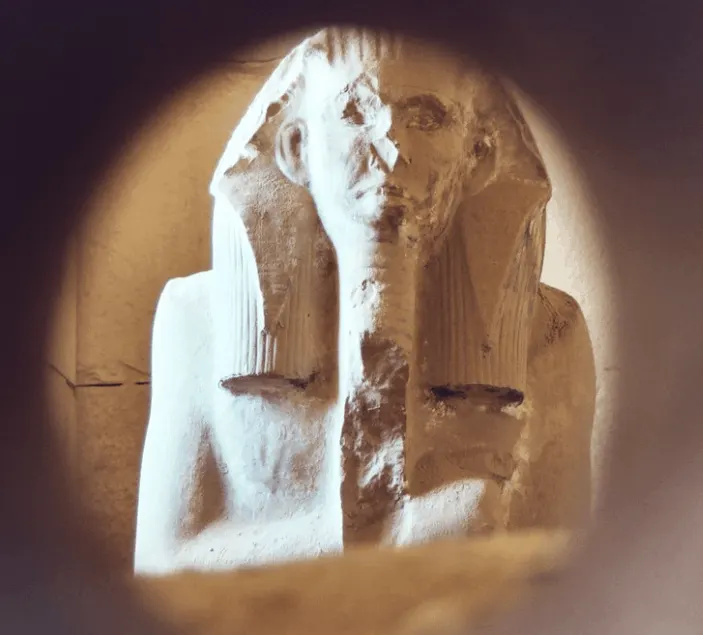
13. The tunnels were clad with blue wall tiles
The web of intricate tunnels leading up to the chambers is clad with blue tiles which were meant to resemble reed matting. The walls were further decorated with reliefs showing the pharaoh doing various rituals during ceremonies.
Yes, the afterlife palace of the pharaoh was meant to be just as luxurious as his palace in real life!

14. A French Egyptologist uncovered a lot of the complex
A lot of the Djoser Complex was uncovered by a French Architect named Jean-Philippe Lauer. He spent about 75 years of his life uncovering and reconstructing parts of the Djoser Complex.
He was also the one who discovered the secret chambers inside the Djoser Pyramid that were decorated with blue tiles.
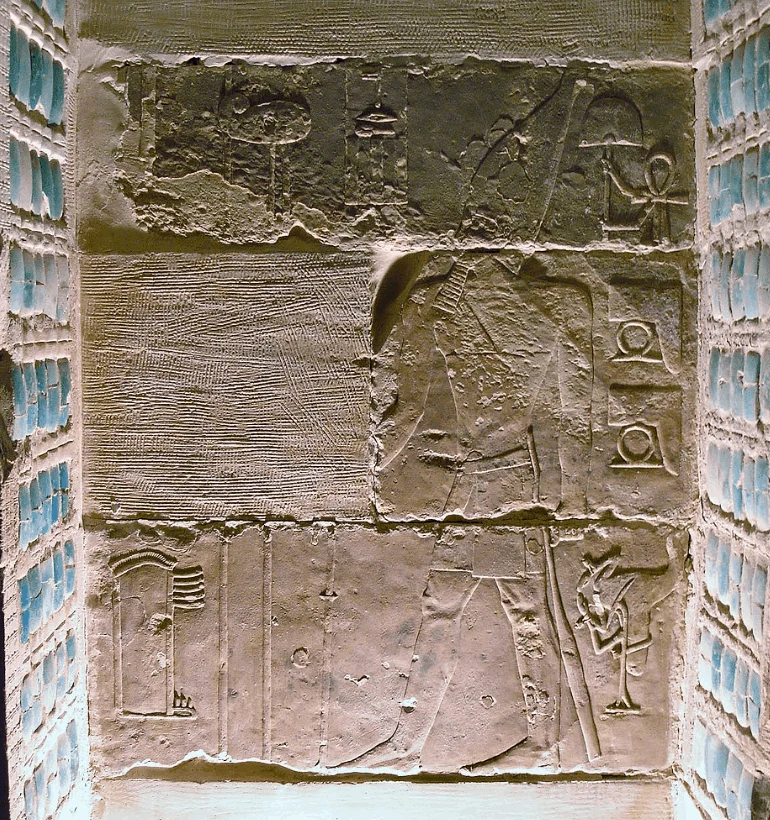
15. The entire complex was enclosed by a wall
The entire Djoser Complex was enclosed with a wall built from light Tura limestone. The wall reached a height of about 10.5 meters (34 feet).
Just outside these walls, there was a huge trench that was dug and most probably served as a quarry for the structures inside the complex.
The Great Trench was about 750 meters (2,360 feet) long and 40 meters (130 feet) wide and historians believe it also served as extra protection for the complex.

16. The complex has a monumental entrance
As the complex was protected by a huge wall, there was one main entrance to enter the burial site. This entrance has a roofed corridor with stone pillars that were carved to resemble bundles of plants.
These pillars reach up to 6.6 meters (22 feet) high and were attached to the wall of the entrance building. This corridor eventually leads to the South Court, a large square between the South Temple and the Pyramid.
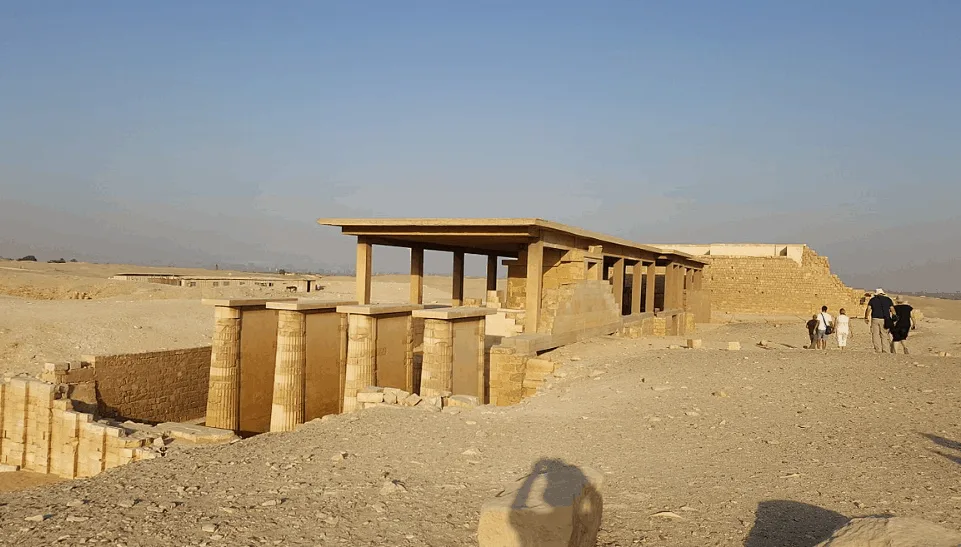
17. The complex was reopened to the public after 14 years
The Djoser Pyramid is the oldest big pyramid in all of Egypt. It has been facing the conditions for many centuries, and in 1992, a massive earthquake damaged a lot of the interior of the building.
A huge renovation project was started in 2006 but was halted in 2011 and 2012 for security reasons, only to resume in 2013.
Since 2020, more than 13 years after the renovations started, the Pyramid of Djoser is finally back open to the public!
